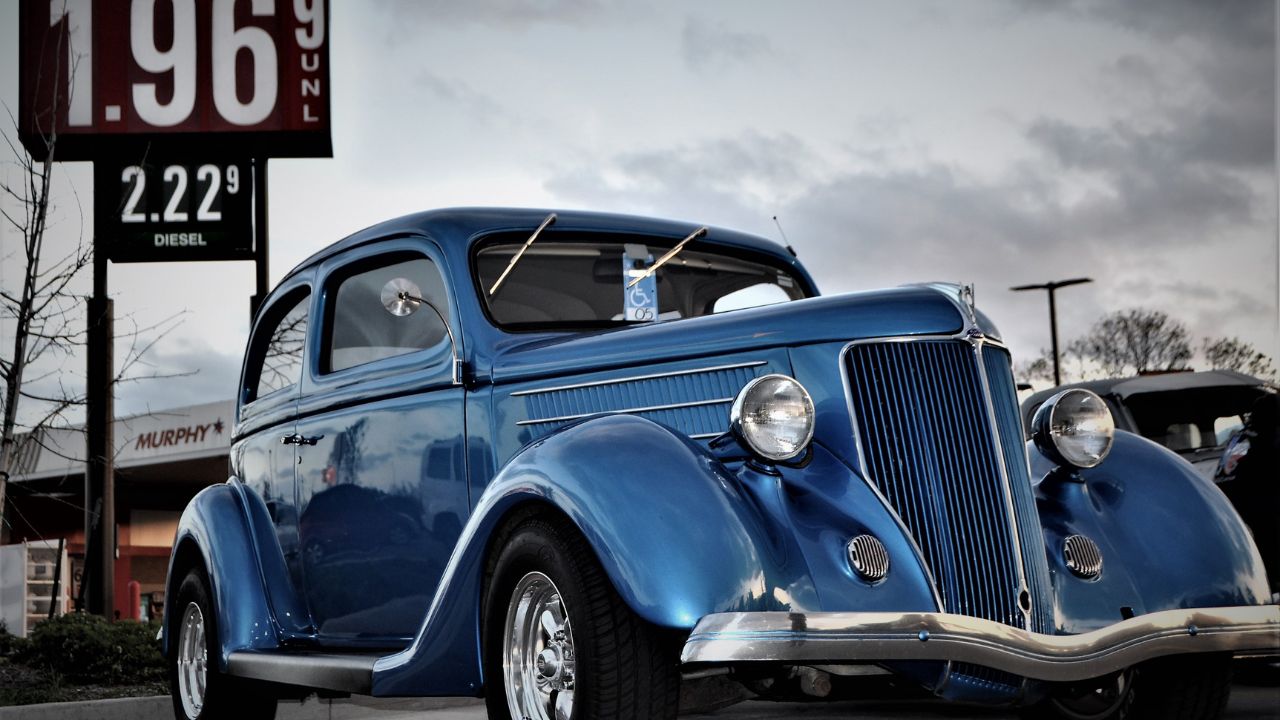
If you are looking for a classic 1980s sports car, you have come to the right place. Below, we have listed our top picks for this model. The Pontiac Fiero GT and the GM F-Body are also included. Which other 80s cars merit your attention? Find out the performance history of each model by reading on.
Pontiac Fiero GT
The first Pontiac Fiero, a two-seat sports car with a mid-engine engine, was built between 1984 and 1988. Pontiac saw the Fiero as a moral victory and a viable alternative for Chevrolet's Corvette. Originally marketed as a commuter car, the Fiero was actually a high-mileage mini to meet CAFE standards.
GM F Body
The GM-80 Camaro/Firebird would still have been part of the GM F-Body lineup, but with a new design and improved performance. The platform of the third generation Camaro was redesign to make it lighter. This would have helped with handling. While the car still used steel structural frames and molded plastic panels, the engineers considered using an extruded aluminum or rolled steel tubular structure. Composites were chosen because they are corrosion resistant and cost-savings.

Saab Turbo 16S GT
Saab's Turbo 16S is one of its most beloved models since the 1980s. Saab began exporting their cars in 1982. In addition, the Automatic Performance Control was introduced. This system allowed the car run on different grades and gasoline without causing any damage. GLE and Turbo both received central locking doors. The Turbo also received Asbestos-free brakes. The front pads were semi-metallic and the rear were silica-based. The GLE model got a new central unit in 1984. Additionally, the bumper decor strips became larger.
Buick GNX
The Grand National Series was the inspiration for the GNX. It also reflects GM's 1982, 1980, and 1982 championships. The Buick Regal GNX-based Buick Regal was driven by Darrell Waltrip who was the Buick's winning driver in those years. Its 4.1-liter naturally aspirated V6 was rated at 125 horsepower. It was manufactured until 1983 when the Buick GNX was discontinued.
Saab 944
The Porsche 944 was the first sports car with a turbocharged turbocharged engine to hit the US. It was built in just a few years, between 1983 and 1990. But it had enough performance that its owners would forget about the Porsche 911s. The 944 was manufactured until 1991. Its production numbers range from 2,402 - 3,098. This model number is often found on the US markets as WPOBA/WPOCB.
Porsche 959
The new Porsche 911 Carrera S is fast, but the old Porsche 959 isn't. The 959's handling is impressive, despite the fact that the body is just 1,450kg lighter. Although the anti-lock brakes work well, the car's body is not as tight. This can make it difficult to avoid bumps at Molecomb corner. The Porsche 959 was a very popular sports car, so you might enjoy a fast drive.

Saab Turbo 16S GT GT manual transmission
Saab Turbo 16S GT was one of few cars to be produced with a manual transmission. The car's 2.4-liter 4-cylinder engine and five-speed manual transmission provided a pleasant driving experience. The suspension system of the car was created to protect the driver from road imperfections. Its double wishbone front- and rear suspension systems gave excellent handling and road feel. The rear suspension consisted of a beam axle that was stabilized by a Panhard rod. Watts linkages connected the axle to the chassis, allowing the driver to adjust various vehicle functions. The vehicle's lower control arm was attached at its bottom. While the upper link was on the top, it faced the rear. Power steering was also an option on the Saab Turbo 16S GT GT.
FAQ
What is the difference?
These two jobs are very similar but not identical. Both a mechanic and an automotive technician can repair cars.
A mechanic must possess good manual dexterity, and be able perform simple tasks efficiently. They must also be able to diagnose problems accurately and repair them effectively.
An automotive technician must be more technically proficient than a mechanic. They need to be able use tools such drills and wrenches, and read blueprints.
They must also be able perform complex procedures safely. They need to be familiar with various types of engines and electrical system.
They should also be able understand how different parts interact.
The result is that a mechanic often earns less than an auto technician. Both jobs offer many possibilities.
What qualifications is required to become an mechanic?
To become a technician, you will need to pass a series exams. These exams include:
-
A general knowledge exam
-
A practical exam
-
An apprenticeship test
These tests are meant to help you grasp the fundamentals of mechanical engineering and physics, before you begin your journey as a mechanic.
You'll be eligible for work as a mechanic after you have passed the tests. But, you will still need an apprenticeship. This will involve training in the trade.
To learn all you can about vehicle repair, you will need to take classes and workshops. Additionally, you will need to work with experienced mechanics.
For mechanic success, you'll need to be focused and meticulous. Repairs to vehicles require you to pay attention to every detail.
To become a good mechanic, you need patience and persistence. If you don’t like following directions, then this career path may not suit you.
If you enjoy cars and fixing them, this job could be a good fit for you.
Is it hard to get work as an auto mechanic?
It can be done. Many garages post their vacancies online. Many people apply simply because they think it might make them feel good. Applying for several positions and seeing if they accept student applications is a good way to get your foot into the door. Another option is to ask family members and friends if anyone works in this industry. They may be happy and willing to recommend someone.
How do I fix my vehicle as a hobby?
You might be interested in cars as a hobby. You can learn to fix them, buy them parts, and even sell them. It's a fun hobby that you can do if it interests you.
It's not an easy task to make this a full-time job. It takes a lot of dedication and hard work. It will also require a large amount of investment.
You may not be able to have an emotional connection with cars unless there is a valid reason.
How long is an automotive course?
An automotive course lasts for three years.
The first year is spent learning about cars and theory. The second year is dedicated towards practical training. This includes learning how to drive, fix engine problems, and doing other maintenance jobs around your car. The final year is spent doing a placement at a local garage, which gives you experience in fixing real-world problems.
What do I need to know about car mechanics?
You don't need to know anything about cars to work as an auto mechanic. All you need to know is how to fix things. That's why most people start doing jobs like fitting brake pads or changing tires before progressing to more complex repairs.
You need to be able read and comprehend diagrams, follow written instructions and adhere to basic principles of good practice. Also, you will need to know how to tell if parts require replacing or repair.
You should not attempt to fix vehicles without proper training and guidance. This is especially true if you deal with expensive components such as engines or transmissions.
Even though you don't need to be an expert on cars, it is important to understand the fundamentals of mechanical engineering and physical physics. This will include understanding the basic principles of engine operation and brake function.
It is also important to remember that you will need to be able to handle many situations. One example is when you could be working on a vehicle involved in a serious crash. Experience with accidents and breakdowns is also a must.
Finally, you need to be willing and able to quickly learn new skills. It is important to be able both to diagnose problems and perform simple maintenance tasks, such as tightening nuts.
Statistics
- 52% of Mechanics in the United States think their salaries are enough for the cost of living in their area. (indeed.com)
- According to the BLS, total auto technician employment is expected to exceed 705,000 by 2030. (uti.edu)
- Apprentice mechanics earn significantly less hourly than mechanics who have completed training, with a median wage of approximately $14.50 an hour, according to PayScale. (jobhero.com)
External Links
How To
How to get a certified mechanic
The mechanic's certifications can be used by people who wish to become professional automotive technicians. They provide an overview of all areas of auto repair, including engine diagnostics, electrical systems, brakes, suspension, steering, fuel injection, air conditioning, heating, exhaust, transmission, diagnostic tools, body repairs, collision damage repair, collision repair, paintless dent removal, motor vehicle emissions testing, and much more.
The program consists of 12 hours of classroom instruction and three months of on-the-job training at a participating dealership. Students must complete at least 60 hours of classroom work per semester. They also need to pass a written test that covers theory and practical questions. The National Institute for Automotive Service Excellence will administer the state exam to students who have completed the coursework. To be employed as an automotive service technician, you must have ASE certification.